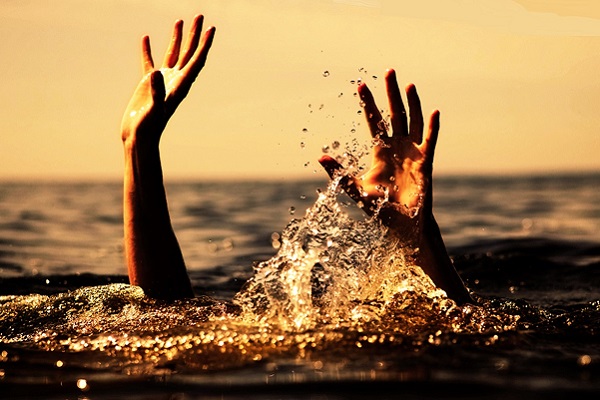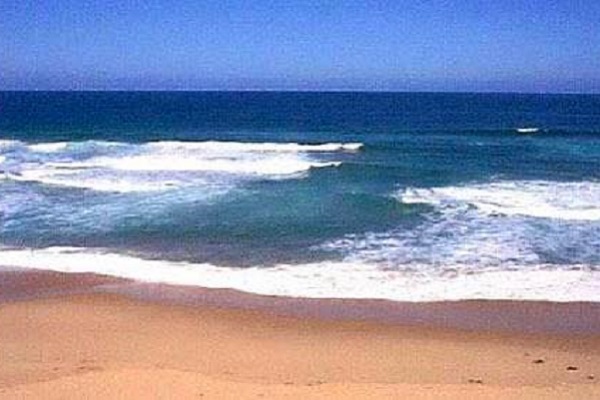Surf scientist Professor Rob Brander advises of what to do when caught in an ocean rip current

With summer being the peak period for drownings in Australia, Professor Rob Brander - known as ‘Dr Rip’ - a surf scientist with UNSW Sydney's School of Biological, Earth and Environmental Sciences has shared his expert opinion on what people should do if caught in a rip.
Professor Brander, who has studied rip current hazards on beaches from both physical and social science perspectives for the past 30 years, is an advocated of the 'swim between the flags' message that has kept millions of people safe when visiting one of Australia's beaches patrolled by lifeguards and lifesavers.
However, he acknowledges the dangers of swimming in unpatrolled locations (as reported at Surf scientist warns of risks of swimming at unpatrolled beaches) so advises the following:
What if I get caught in a rip?
Once you're in water over the waist, the danger of being taken by a rip rises dramatically. You should always make sure your feet are firmly on the sand, particularly if you are not a good swimmer.
Professor Brander stated that if people do find themselves caught in a rip, there are a few key things they should do:
1. Relax!
There’s a saying that ‘Rips don’t drown people, people drown in rips’. The main reason for that is many people panic when they realise they are caught in a rip. Panic is the real danger.
Professor Brander states "you really don't need to panic because rips are just taking you for a ride.
"Rips don't pull you under the water. That’s a myth - there's no such thing as an undertow. They don’t take you across the ocean and they aren’t taking you into shark-infested waters. They're just taking you for a ride and there’s a good chance they might re-circulate back into shallower water."
2. Don't swim against it
For most people when they get caught in a rip, their first instinct is to swim back to the safety of the beach.
Professor Brander notes "but that means you’re swimming against the rip, which is flowing very fast and probably faster than most people can swim.
"Swimming against the rip will just tire you out and lead to panic."
3. Float
The best thing to do when caught in a rip current is to float.
Professor Brander says "if you relax and float, by treading water, or even lying on your back, you’re conserving your energy.
"Eventually the rip will stop flowing, usually just beyond the breaking waves and often rips can re-circulate you around back into shallower water."
The traditional advice has always been to swim parallel to the beach to escape a rip, but that only applies to strong swimmers and is complicated by the fact that not all rips flow straight offshore. It’s always better to float.
4. Signal for help
So you're not panicking, you're not swimming against the rip back to the beach and you're floating. The next thing to do is to signal for help. Are there lifeguards, lifesavers, or surfers nearby? It's time to raise your arm and wave it, or call out for help.
Professor Brander notes "surfers do a lot of rescues and they have a nice surfboard you can hold onto. So if you're in trouble in a rip and there’s no lifeguards or lifesavers around, look for surfers and get their attention."
5. If there's no-one else on the beach ...
If you are caught in a rip and there's nobody else around to help, then you really do have a big problem.
Professor Brander explains "as harsh as it sounds, you really shouldn’t have gone in the water in the first place.”
He says that in these cases, the best thing to do is to still float and stay calm, even if the rip has taken you out behind the breakers. There’s a good chance that someone will eventually see you.
Professor Brander adds “the other option is to swim along the beach a fair way and then back into shore. Look for areas where there are lots of waves breaking and aim for that.
"But that’s only if you are a strong swimmer, because it’s going to involve a long and hard swim."
It really does come down to ‘If in doubt, don’t go out’.
Help! I need to rescue someone
Tragically, each year a significant number of people die trying to rescue others in distress on Australian beaches, often a family member or child.
A recent study found that in the 15-year period between 2004 and 2019, between four and five bystanders fatally drown while trying to rescue others in trouble.
The majority of them occurred on unpatrolled beaches.
Professor Brander goes on to say "if you're on the beach and you see someone in the water in distress and you want to go help them, there's a number of important things you really need to think about.
"Even if it’s your own child in trouble in the water, I cannot emphasise enough how important it is not to rush in. Don’t rush in. That person may not really know what's going on, they may not even be panicking - but you might be."

Avoid the instinct to sprint to the water and then swim as fast as you can to reach the person in trouble because by the time you reach that person, there’s a good chance you are already tired and exhausted.
Professor Brander concludes "so please don't rush in. You need to take some time - even just 10 seconds and think about what to do. You need to call for help, or get someone to go get help. There might be a lifeguard or lifesaver further down the beach, maybe there's some surfers around, but get somebody to get help.
"And if you are going to go in the water, you must grab something that floats. Look around the beach, maybe there's a boogie board lying around or a surfboard or ball, something that you can take with you if you're going to go in because that gives you and the person you're trying to rescue something to hold on to and that can make a difference."
Dr Rip's advice for bystander rescues:
- Don't rush in.
- Call for help if possible. Or get someone to go get help. There might be an Emergency Response Beacon on the beach.
- Look on the beach for a floatation device or anything that floats. There might be public rescue equipment available. If you are going to go in the water, you must bring something that floats.
- If you are going to go and help the person, don’t run or swim as fast as you can - you need to conserve energy.
- When you get to the person, try and get them to stay calm. Assure them that all they have to do is float. If you brought one, use your floatation device to support them (and you).
- When you get to the person, try and get them to stay calm. Assure them that all they have to do is float.
- Wave for help, or if there's nobody else around, try to slowly move yourself and the person you're rescuing towards areas of breaking waves - this should indicate an area of shallower water and the breaking waves may assist you get back to shore.
Professor Brander has practical advice about minimising risk on unpatrolled beaches including:
- Stopping, thinking and having a safety plan before getting in the water
- How to spot rips
- What to do when you're caught in a rip
- How to perform a bystander rescue
Thousands of Australians visit unpatrolled beaches every summer, and this is where most, if not all, drownings occur.
Click here to view a full multimedia, immersive experience on rip currents.
Related Articles
29th December 2023 - ‘Float to Survive’ message promoted across social media
27th December 2023 - Drowning reported at newly opened at Penrith Beach
24th December 2023 - Life Saving Victoria advises of cyber attack
18th December 2023 - Surf scientist warns of risks of swimming at unpatrolled beaches
12th December 2023 - APOLA President Bruce Hopkins promotes ‘Float to Survive’ message with Blacktown City Council
8th December 2023 - Global drowning prevention initiatives showcased at Perth Conference
6th December 2023 - Surf Life Saving Australia launches ‘Give an F about the Flags’ new summer safety campaign
5th December 2023 - Global water safety community converges on Perth with a mission to end drowning
2nd December 2023 - Rip Current Survival documentary to get premiere at World Conference on Drowning Prevention
9th November 2023 - Launching its Keep Watch water safety campaign Royal Life Saving warns of child drowning risk
15th September 2023 - Latest National Drowning report reveals rise of deaths among older men
25th July 2023 - Landmarks Go Blue to mark World Drowning Prevention Day
11th February 2023 - Drownings highlight need for education on rip currents
23rd January 2023 - Float to Survive message demonstrated in ocean rip at Sydney’s Manly Beach
9th September 2022 - APOLA President Bruce Hopkins gains support for adoption of Float to Survive initiative as a national anti-drowning prevention message
20th September 2018 - One in four Australian drowning deaths involves people born overseas
15th December 2017 - Leading professional lifeguard says swim between flags message is ‘desirable but unrealistic’
27th December 2015 - Professional Lifeguards highlight need for safety first at the beach
3rd January 2014 - Professional Lifeguards say safety first at Australian beaches
28th November 2013 - Ocean rips kill more than bushfires, cyclones, floods or shark attacks
21st January 2010 - Professional Lifeguards reject ‘flawed’ SLSA Rip Campaign






